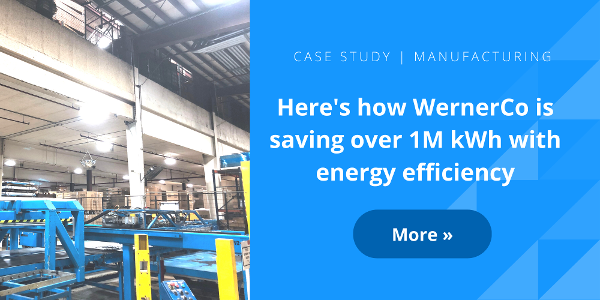| July 1, 2020
6 Ways a Commercial Lighting Redesign Saves Energy
We often examine lighting at the fixture level: the specific type of LED, cost per piece to install, rated wattage, number of fixtures in a space, etc. But commercial or industrial facility lighting can also be looked at comprehensively. In new buildings, architects, operations teams and electricians collaborate on a lighting design specific for the new space-use. They often choose (we hope) efficient technologies and modern sensors for these new buildings.
However, most of us don’t work in brand new spaces. The lighting systems we interact with every day are years, sometimes decades old. Many commercial lighting designs have to serve multiple purposes as buildings change tenants or owners over time, from manufacturing areas and office spaces to retail floors and waiting rooms.
Tackling a commercial lighting redesign results in multiple benefits for a facility’s occupants, as well as its executive team. Lowering energy use and improving operational efficiency to lower costs are significant outcomes for companies who look at lighting, not only as a single piece of equipment to replace, but a holistic system to improve.
Six reasons for updating lighting design in commercial and industrial facilities
Commercial building lighting design is the combination of (a) decisions for the layout and (b) selection of fixture types that form a lighting system. This could include one or multiple rooms or buildings. Modern lighting design should include efficient LEDs and a strategic controls integration.
These six reasons outline the primary benefits for existing buildings to consider a lighting upgrade with the entire system in mind, rather than individual replacements.
-
Higher lumen output with LED lighting = fewer required fixtures that operate more efficiently
The efficiency of a single LED fixture means less energy required to power that light. Multiply that number by the several hundred (or thousand) fixtures needed for a commercial building and the kilowatt hours start to really add up. -
Empty ballasts still draw energy
In your day-to-day facility operations, lighting fixtures get replaced, updated, removed or otherwise managed. Change to a lighting design over time can result in situations like this: fixtures that had tubes removed but left the ballasts. It’s not a huge amount of energy per piece, but totaled and running over time can needlessly draw power.
For one example, our team worked in a manufacturing center that had two floors with over 58 rows of 8-foot fluorescents, up to 36 fixtures in each row. Prior to our arrival, the operations team had removed many of the tubes. We took out over 2,000 energy-drawing ballasts and eliminated their unnecessary energy draw. The annual savings from this tactic alone was over $5,500. -
Adding controls as part of the redesign can enable grouping and improve sensor layout
Offices with desks, data centers, warehouses and many other commercial spaces change layout over time. Adding controls to groups of fixtures enables a team to program the lights to work appropriately for the space now, with the flexibility to update over time.
In that same manufacturing facility example, 768 remaining ballasts on the bottom floor were removed and replaced with new LED fixtures. Tier-two programmable sensors were integrated into these new lower level fixtures which are now grouped and cater to occupancy and light level needs. If the layout or use of that particular floor should change, the team can easily update how the lighting is grouped together. -
Existing fixtures can just be upgraded to LED tubes and drivers
Certain lighting configurations might be a candidate for partial upgrade by retrofitting LED tubes and drivers instead of a full, equipment replacement. By replacing the fluorescent tubes and fluorescent ballasts with LED tubes and drivers, we are able to maintain the existing functionality and aesthetic of the space while significantly reducing its energy usage. -
Existing wiring, power source and fixture type can be updated alongside new design
Slot fixtures can become overheated if not getting the right amount of power. Circuits that are currently maxed out by the lighting energy draw will often trip breakers. When LEDs replace inefficient lighting, the electric demand is reduced significantly. This prevents those breakers from tripping, overheating and eventually failing completely. -
Incorrect installations, inconsistent fixtures or out-of-code lighting can be rectified
Taking a whole-building approach to lighting gives you the opportunity to make upgrades that may have been piling up for years. While tackling updated lighting design to serve today’s building needs, you can ensure all fixtures and wiring are up to code
Additional commercial lighting design benefits
Besides energy savings, commercial lighting redesign can:
- Improve safety
- Ensure proper light levels for product requirements/storage
- Contribute to better employee experience o Lower maintenance costs
- Decrease annual utility bill
Better design = a better experience
Good lighting design at home can immediately make you feel comfortable and at ease. Good lighting at work is just as important for creating the right kind of environment. Furthermore, updating your lighting design with attention to efficiency results in better operations and lower utility spend – it’s a win-win.
